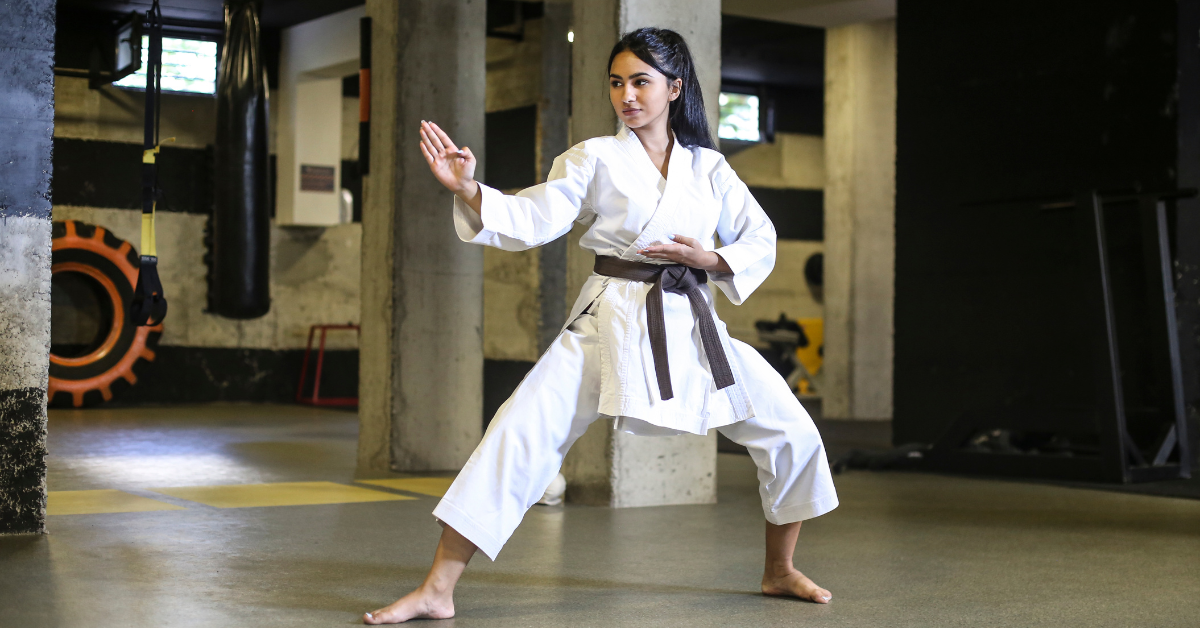Karate is a traditional Japanese martial art that emphasizes striking, kicking, and blocking with bare hands. It is more than just a method of fighting—it is a path to self-discipline and respect. This guide introduces karate’s history, techniques, and cultural meaning in a way that helps beginners and foreigners truly understand its spirit.
Origins and History of Karate
The origins of karate go back to the Ryukyu Kingdom in Okinawa. Since Okinawa had active trade with China and Southeast Asia, Chinese martial arts were introduced and blended with local self-defense methods. At that time, commoners were prohibited from carrying weapons, so techniques of unarmed defense became essential, eventually developing into karate.
Later, it was introduced to mainland Japan by Gichin Funakoshi, who popularized the name “karate.” In the 20th century, karate became part of school education and spread globally. Today, it is recognized as an Olympic sport and is considered one of Japan’s representative martial arts.
Basic Techniques and Characteristics of Karate
Karate is structured around four basic types of techniques: punching, kicking, striking, and blocking. These moves are not performed with brute strength but rather with an emphasis on body alignment, breathing, and shifting one’s center of gravity.
Representative Techniques in Karate
| Category | Technique | Characteristics |
|---|---|---|
| Punch | Straight punch (Seiken-zuki) | A fundamental attack using hip rotation |
| Kick | Front kick (Mae-geri) | A forward thrusting kick |
| Strike | Back-fist strike (Uraken-uchi) | A quick strike with the back of the hand |
| Block | Upper block (Jodan-uke) | A defensive movement to protect the head |
For beginners, repeated practice of these movements is crucial. Even seemingly simple movements become powerful weapons when precision and speed are achieved.
Kata and Kumite
Karate training is largely divided into “kata” and “kumite.”
Comparison Between Kata and Kumite
| Aspect | Kata | Kumite |
|---|---|---|
| Content | Solo forms or prearranged sequences | Sparring against an opponent |
| Purpose | Accuracy and concentration | Decision-making and adaptability |
| Atmosphere | Calm, precise, ritual-like | Intense and tactical |
| Beginner’s path | Start with kata | Move on to kumite once basics are learned |
Beginners should start with kata to learn proper posture and technique, and then move on to kumite. Building a safe foundation before sparring is essential.
Etiquette in Karate
Karate is known for the principle “begin and end with courtesy.” Every action is tied to respect, from bowing when entering the dojo, meditating before and after practice, to bowing to one’s opponent and instructor.
Examples of Karate Etiquette
| Occasion | Type of Etiquette | Meaning |
|---|---|---|
| Entering or leaving the dojo | Bow | Respect for the dojo |
| Before practice | Meditation | Focusing the mind |
| Before and after sparring | Bow | Respect and gratitude toward the partner |
| After practice | Meditation | Reflection and self-control |
For foreigners, these may seem formal at first, but over time they reveal their purpose: karate is not only about strength but also about refining one’s character.
Differences Among Karate Styles
Karate has multiple schools, each with distinct characteristics.
Major Styles of Karate
| Style | Features | Representative Focus |
|---|---|---|
| Shotokan | Long stances and strong strikes | Powerful punches and kicks |
| Goju-ryu | Blending hard and soft techniques | Flexible yet forceful movements |
| Shito-ryu | Emphasis on kata | Wide variety of techniques |
| Wado-ryu | Focus on body shifting | Deflecting and redirecting attacks |
As learners progress, they can choose a style that suits their personality and body type. Selecting the right style makes training more effective.
Health Benefits of Karate
Karate is not only a martial art but also a highly effective form of physical and mental training.
Health Benefits of Karate
| Benefit | Description |
|---|---|
| Muscle strength | Punches and kicks strengthen the whole body |
| Flexibility | Kata improves joint mobility and muscle flexibility |
| Cardiovascular health | Movements and breathing enhance stamina |
| Stress relief | Concentration helps achieve mental calmness |
Karate supports both physical fitness and mental well-being, making it an ideal practice for maintaining health and balance.
Karate’s Global Expansion
Karate is now practiced in over 180 countries and regions. It has become a bridge for international exchange through global tournaments and local competitions.
Karate in Japan vs. Overseas
| Aspect | Japan | Overseas |
|---|---|---|
| Training style | Emphasis on kata and etiquette | Focus on sport and fitness |
| Instruction | Strict, traditional methods | Often taught in a casual, fitness-oriented way |
| Demographics | Mainly students and adults | Children to seniors across wide age ranges |
Cultural differences shape the way karate is practiced, but its essence remains universal. Despite differences, karate is beloved worldwide.
Recommended Learning Steps for Beginners and Foreigners
Beginners and foreign learners benefit from a step-by-step approach to karate.
Learning Steps in Karate
| Step | Content | Key Point |
|---|---|---|
| Step 1 | Learn etiquette | Understand dojo customs |
| Step 2 | Practice punches and kicks | Repetition builds familiarity |
| Step 3 | Learn kata | Experience the flow of techniques |
| Step 4 | Try kumite | Apply techniques in sparring |
Advancing step by step ensures safe and effective learning.
Conclusion
Karate, born in Okinawa, is a martial art that emphasizes both technique and etiquette. Though different schools highlight different methods, they all aim at the holistic growth of body and mind. With its global expansion, karate now serves as both a gateway to Japanese culture and a means of self-improvement.
For beginners and foreigners, karate offers more than just combat skills. It provides a way to strengthen the body, calm the mind, and grow as a person, making it a lifelong pursuit with deep cultural value.






